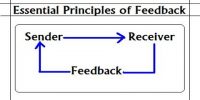An information system can be defined as a set of a coordinated network of components. which act together towards producing, distributing and or processing information. An important characteristic of computer-based information systems information is precision, which may not apply to other types. So, the purpose of an information system is to turn raw data into useful information that can be used for decision making in an organization.
Phased conversion strategies of Information System
The following describes a brief summary of Phased conversion method in the context of the Spice Hotel database solution –
Phased conversion involves a gradual introduction of the new system, while at the same time replacing ‘elements of the current system until the current system is completely replaced by the new system.
This conversion method is arguably the least risk with respect to implementing the Spice Hotel database solution. The greatest disadvantage is the time necessary for complete conversion to occur, as an element by element of the current system is replaced by its electronic counterpart. Alongside this gradual replacement, training must be ongoing to ensure that users and participants are well versed with the new system during its gradual implementation. Phased conversion is also relatively expensive as the system is implemented in stages as opposed to all at once (such as indirect conversion).
The greatest advantage, however, is the reduced risk associated with the piecewise implementation of the new system. In the case of any system failures, the current system is still partially operational during the implementation phase, which means there is some fallback in the case of any unexpected performance issues with the new system.
The recommended conversion method would be a phased conversion, where the current paper-based system is transposed with the new system, process by process. Testing and training would occur during the implementation of each new element during the implementation. The time taken for complete conversion would take a lot longer than direct conversion and more expensive, but the risk of system-wide catastrophic failure is mitigated by the virtues of a phased conversion. Extensive training would be required as the current and the new system are diametrically distinct. With a phased conversion,-the training could occur over an extended period of time as opposed to all at once.















